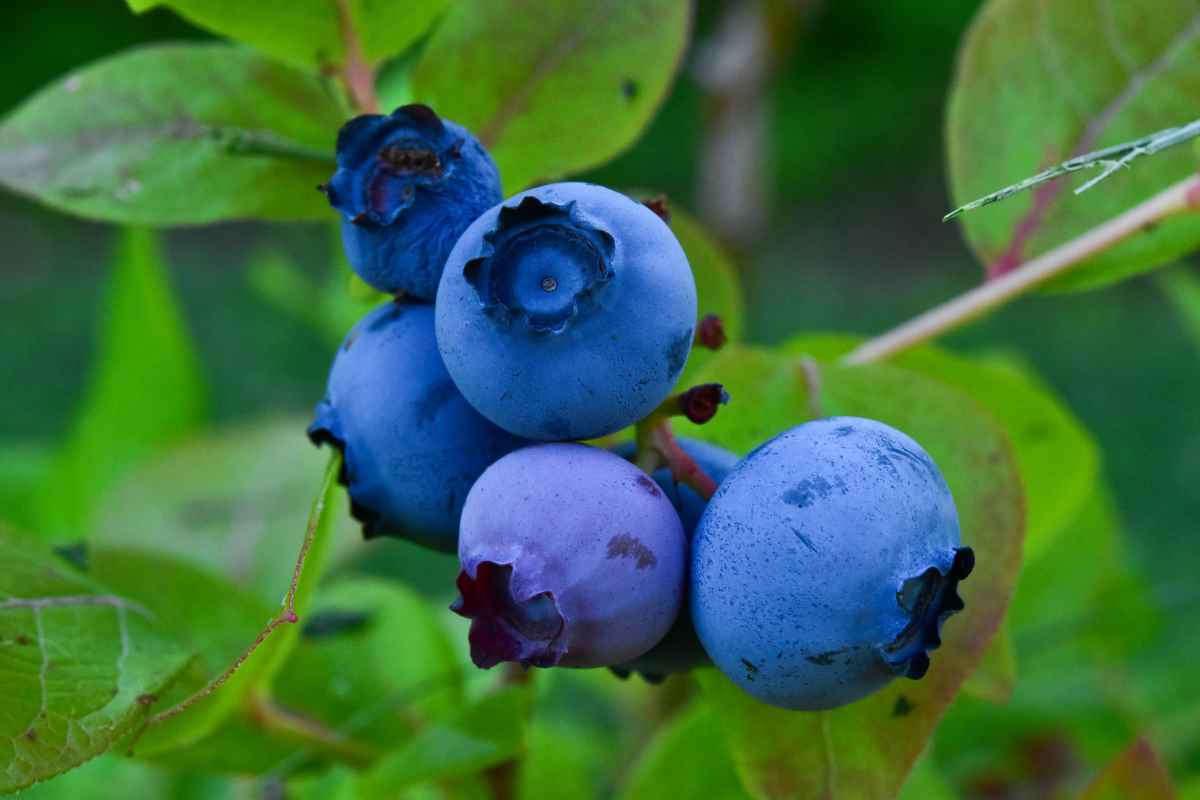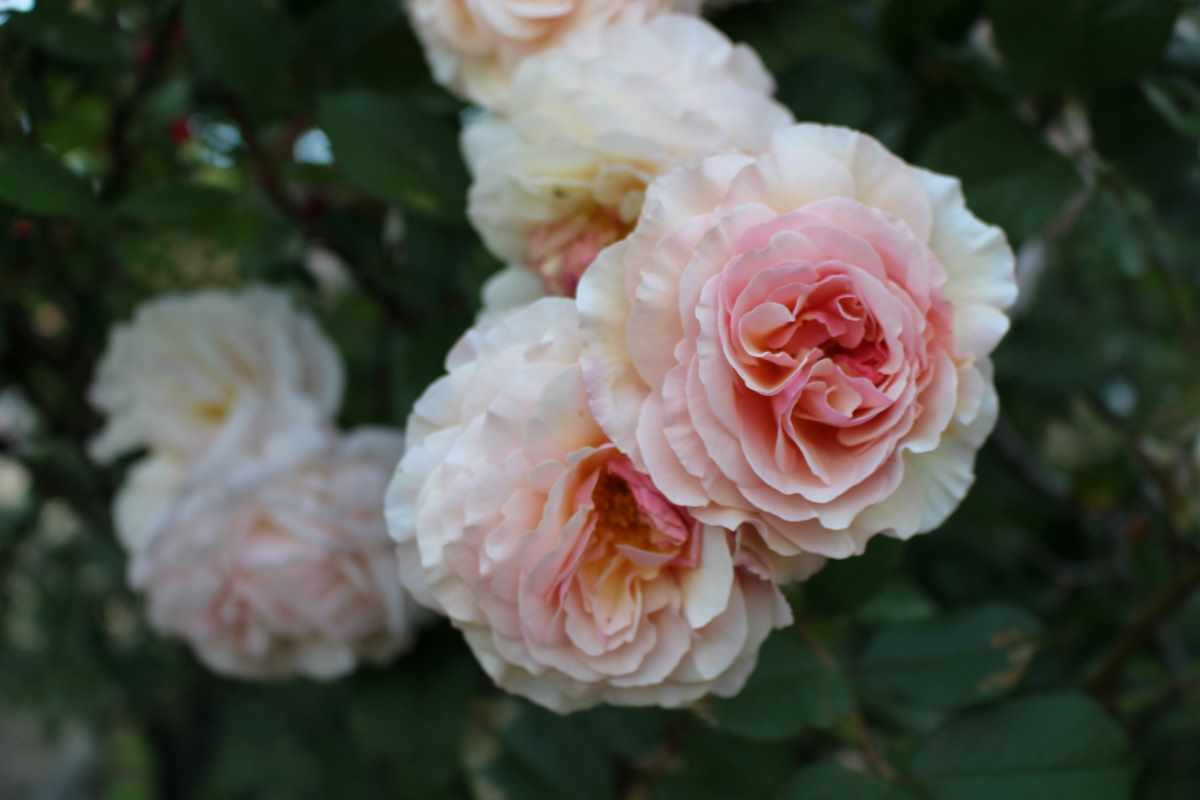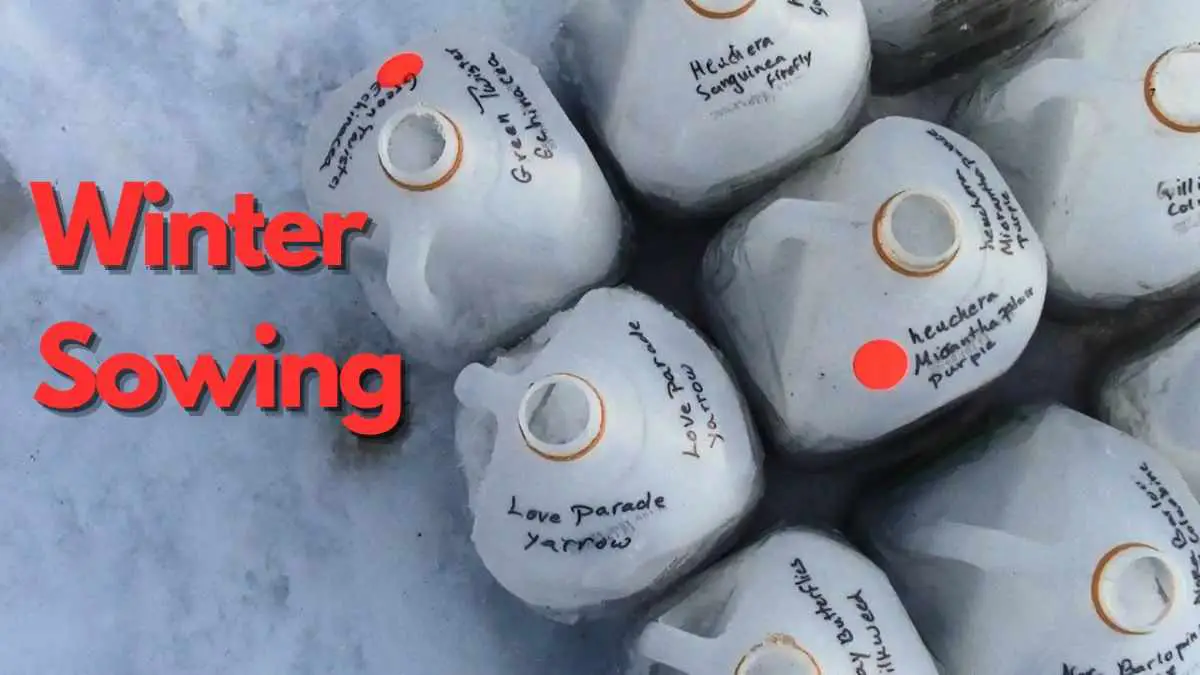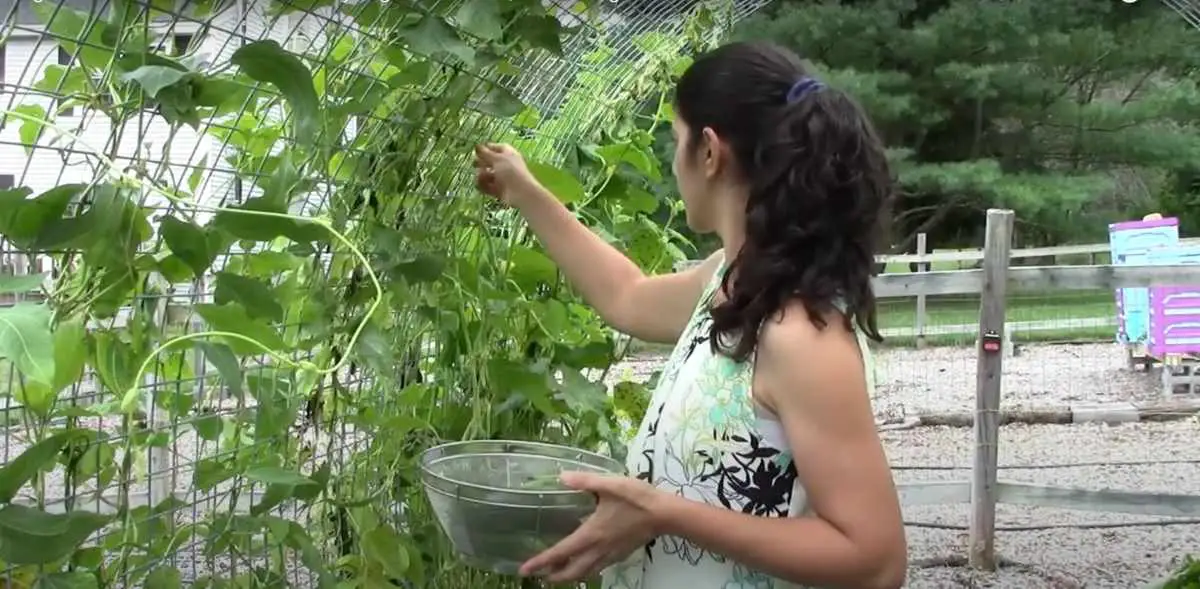Learn How To Grow Blueberries in this comprehensive guide that will teach you everything you need to know about growing blueberries.
Choosing The Right Variety Of Blueberries
When it comes to blueberry varieties, there are several options to choose from, each with its own unique characteristics in terms of flavor, size, ripening time, and growth habit. Here are some common blueberry varieties:

Highbush Blueberries:
- Bluecrop: One of the most popular varieties, known for its large, sweet berries with excellent flavor. It ripens mid to late season and is suitable for a wide range of climates.
- Jersey: Another popular variety, prized for its large, sweet berries and vigorous growth habit. It tends to ripen earlier in the season compared to Bluecrop.
- Patriot: This variety is prized for its cold hardiness, making it suitable for northern climates. It produces medium-sized berries with a sweet-tart flavor and ripens mid to late season.
Lowbush Blueberries:
- Wild Blueberries: These are native to North America and are smaller in size compared to highbush varieties. They have a more intense flavor and are often used in baking, jams, and preserves. They are well-suited to colder climates and acidic soils.
- Tophat: A compact, dwarf variety of lowbush blueberry, ideal for small gardens or containers. It produces small, flavorful berries and is cold-hardy.
Rabbiteye Blueberries:
- Climax: Known for its large, sweet berries and vigorous growth habit. It is heat-tolerant and well-suited to warmer climates, such as the southern United States.
- Premier: Another popular rabbiteye variety, prized for its large, flavorful berries and reliable production. It ripens mid to late season and is also heat-tolerant.
Half-High Blueberries:
- Northblue: A compact, cold-hardy variety that is a cross between lowbush and highbush blueberries. It produces medium-sized berries with good flavor and is suitable for northern climates.
- Polaris: Another half-high variety known for its cold hardiness and early ripening. It produces medium to large berries with a sweet flavor and is well-suited to short growing seasons.
Hybrid Blueberries:
- Sunshine Blue: A unique hybrid variety that is evergreen in mild climates, making it suitable for year-round ornamental interest. It produces medium-sized berries with a sweet flavor and is heat-tolerant.
When selecting blueberry varieties, consider factors such as your climate, soil conditions, desired harvest time, and space available for planting. Experimenting with different varieties can add diversity to your blueberry harvest and extend the season of fresh fruit in your garden.

How To Grow Blueberries – Choosing A Propper Location
Location plays a crucial role in the successful growth of your blueberries. Here are some factors to consider when choosing the right location for your blueberry bushes:
Sunlight
Blueberries thrive in full sun, meaning they need at least 6 to 8 hours of direct sunlight each day to produce abundant fruit. Choose a location in your garden that receives ample sunlight throughout the day, preferably with minimal shading from trees or buildings.
Soil PH and Composition
Blueberries require acidic soil with a pH level between 4.5 and 5.5 for optimal growth and fruit production.
Test the soil in your chosen location using a soil testing kit or by sending a sample to a local agricultural extension service. If the soil pH is too high, you can lower it by incorporating amendments such as elemental sulfur or acidic organic matter like peat moss, pine needles, or composted oak leaves.

Soil Drainage
Blueberries prefer well-draining soil that retains moisture without becoming waterlogged.
Avoid planting blueberries in areas prone to waterlogging or poor drainage, as this can lead to root rot and other problems. If you have heavy clay soil, consider amending it with organic matter to improve drainage.
Air Circulation
Good air circulation around blueberry bushes is essential for preventing diseases such as powdery mildew and reducing the risk of frost damage.
Avoid planting blueberries in low-lying or sheltered areas where air movement may be limited. Instead, choose a location with adequate airflow and spacing between plants to promote ventilation.
Accessibility For Maintenance
Choose a location that is easily accessible for watering, fertilizing, pruning, and harvesting.
Planting blueberries too close to fences, walls, or other obstacles may make it difficult to perform routine maintenance tasks. Leave enough space around each bush for easy access and maneuverability.
Microclimates
Consider the microclimates within your garden, which can vary based on factors such as elevation, slope, and proximity to structures or bodies of water.
Blueberries may perform differently in different microclimates, so observe temperature fluctuations and sunlight exposure patterns to choose the best location for optimal growth.
By carefully selecting the right location for your blueberry bushes based on these factors, you can create an ideal growing environment that promotes healthy plants and abundant fruit production.

Common Pests And Diseases That Blueberries Face And How To Control Them
According to NC State Extension, there are over 300 pests reported to be on blueberries and here are a few of them:
Common Blueberry Pests:
Aphids
These small, soft-bodied insects feed on plant sap and can cause distorted growth and reduce plant vigor.
Spider Mites
Spider mites are tiny pests that feed on plant juices and can cause stippling, webbing, and leaf drop. Keep plants well-watered and increase humidity to deter spider mites. Prune and remove heavily infested foliage.
Fruit Flies
Fruit flies are attracted to ripe or decaying fruit and can cause damage to blueberry crops. Monitor for fruit fly activity and pick ripe berries promptly to reduce infestation. Place traps near blueberry bushes to capture adult fruit flies, or consider using row covers to protect fruit from infestation.
Birds
Birds can be a significant problem in blueberry production, especially as fruit ripens. Protect ripening berries from birds by covering bushes with bird netting or installing scare devices such as reflective tape, wind chimes, or predator decoys. Harvest fruit promptly to minimize bird damage.
Deer And Other Wildlife
Deer and other wildlife may also feed on blueberry bushes, especially in rural or wooded areas (Speaking from experience, as a person who almost lost her blueberry bushes to deer). Install fencing or use repellents to deter deer, rabbits, and other animals from damaging plants.

Common Blueberry Diseases
Powdery Mildew
Powdery mildew is a fungal disease that causes a white powdery growth on leaves and stems. Improve air circulation around plants by pruning to promote airflow and reduce humidity levels.
Anthracnose
Anthracnose is a fungal disease that causes dark lesions on leaves, stems, and fruit. Prune and remove infected plant parts, and improve airflow to reduce humidity levels.
Leaf Spot Diseases
Various fungal and bacterial pathogens can cause leaf spot diseases, resulting in dark lesions or spots on foliage. Remove and destroy infected leaves, and avoid overhead watering to reduce humidity levels.
Root Rot
Root rot is a soil-borne disease caused by fungal pathogens that infect the roots and lower stems of blueberry plants.
Virus Diseases
Virus diseases can cause stunted growth, leaf discoloration, and reduced fruit yield in blueberry plants. Unfortunately, there are no effective treatments for virus diseases, so prevention is key. Plant virus-free stock, control insect vectors, and remove and destroy infected plants to prevent the spread of viruses.

How To Prevent Blueberry Pests And Diseases
Prevention is key. Most of these pests and diseases can be prevented by implementing good planting and care practices.
- Avoid overhead watering to prevent fungal diseases and viruses
- Plant blueberries in a well draining location that can retain moisture, but does not get waterlogged.
- If necessary, plant your blueberries in raised beds or over a mound to encourage drainage.
- Improve airflow by keeping your blueberries well pruned.
- Avoid Surrounding your blueberries with plants, and follow proper spacing to encourage airflow.
- Avoid overwatering.
- Improve soil quality and drainage by adding in organic matter such as compost and leafmould.
- Apply a natural horticultural oil or neem oil for insect control during the dormant season.
- Insure Soil Acidity is at correct levels. If not, your blueberries will show signs of stress such as yellowing of leaves, red leaves in the summer, minimal or no growth, and leaf drop. you can measure soil acidity using a PH meter.
- Utilize natural enemies such as predatory insects, parasitic wasps, and beneficial nematodes to help control pest populations. Avoid broad-spectrum insecticides and fungicides that can harm beneficial insects and disrupt natural pest control.
By implementing a comprehensive pest and disease management plan that incorporates these strategies, you can help protect your blueberry plants from damage and maintain a healthy and productive crop. Regular monitoring, timely intervention, and proper cultural practices are key to successful pest and disease control in blueberry production.
How To Grow Amazing Blueberries
Preparing the soil properly is crucial for the successful growth of blueberries.
Testing The Soil For Optimal Blueberry Growth
Before planting blueberries, it’s essential to test the soil to determine its pH level and nutrient content.
Blueberries require acidic soil with a pH between 4.5 and 5.5 for optimal growth. Contact your local agricultural extension service or use a home soil testing kit, or a PH meter to assess the pH and nutrient levels in your soil.
How To Lower The PH Of The Soil
To lower the pH of the soil, incorporate acidic organic matter such as peat moss, pine needles, composted oak leaves, or well-rotted sawdust into the planting area.
Work these amendments into the soil to a depth of at least 12 inches using a shovel or rototiller. It’s important to mix the amendments thoroughly to ensure an even distribution of acidity throughout the soil profile.
You can also lower the PH of the soil by adding organic amendments such as elemental sulfur, or acidifying fertilizers.

How To Improve Soil Drainage And Structure
Blueberries prefer well-draining soil that retains moisture but doesn’t become waterlogged.
If your soil has poor drainage, amend it with organic matter such as compost or aged manure to improve its structure and porosity. You can also add a little bit of sand to your soil if you have clay soil.
It is best to avoid planting blueberries in areas prone to waterlogging or heavy clay soils, as this can lead to root rot and other problems.
I have a blueberry in a location that gets very boggy in the spring and fall, but it has well draining soil. That blueberry is thriving so far because it is getting the water that it needs, and the soil is well draining.
Incorporating organic matter into the soil provides essential nutrients, improves soil structure, and enhances microbial activity. Aim to add organic matter at least several weeks before planting to allow time for decomposition and soil conditioning.
The Importance of Mulching
Apply a layer of organic mulch, such as pine bark, wood chips, or straw, around the base of newly planted blueberry bushes.
Mulch helps conserve soil moisture, suppress weeds, and maintain soil acidity. Leave a gap between the mulch and the stems of the plants to prevent moisture-related issues and discourage pests and diseases.
Blueberry roots are shallow and sensitive to compaction, so avoid walking or working in the planting area once the soil has been prepared.
Why Should You Fertilize Blueberries
While organic matter provides many of the nutrients blueberries need, you may also need to fertilize them periodically with a balanced fertilizer formulated for acid-loving plants.
Using well balanced organic fertilizers will add any elements that your soil might be missing, even after adding organic matter.
Apply fertilizer according to soil test recommendations or package instructions, typically in early spring before new growth begins. Avoid over-fertilizing, as this can lead to nutrient imbalances and other issues.
By taking the time to properly prepare the soil before planting blueberries, you can create an optimal growing environment that promotes healthy root development, vigorous growth, and abundant fruit production.

How To Grow Blueberries In Containers
Growing blueberries in containers can be a great option, especially for those with limited garden space or unsuitable soil conditions.
Choosing The Right Container
Select a large container with adequate drainage holes to prevent waterlogging. A container with a diameter of at least 18 inches is recommended to accommodate the blueberry’s root system. Use a lightweight, durable material such as plastic or glazed ceramic.
Selecting The Right Variety
Choose a blueberry variety that is well-suited to container growing. Dwarf or compact varieties are ideal, as they require less space and can thrive in a confined environment. Look for varieties such as ‘Top Hat’, ‘Peach Sorbet’, or ‘Jelly Bean’ specifically bred for container culture.
Choose The Right Potting Mix
Blueberries require acidic soil with a pH between 4.5 and 5.5 for optimal growth. Use a high-quality potting mix formulated for acid-loving plants or make your own by combining peat moss, pine bark, and perlite.
Avoid using regular garden soil, as it may not provide the proper acidity and drainage blueberries need. Garden soil tend to compact drastically in containers.
How To Plant Blueberries In Containers
Fill the container with potting mix to within a few inches of the top. Add in Organic Berry Fertilizer and mix it in. Gently remove the blueberry plant from its nursery pot and place it in the center of the container.
Ensure the top of the root ball is level with the soil surface. Backfill with additional potting mix and firm it gently around the plant.
Keep the soil consistently moist but not waterlogged. Blueberries have shallow roots and are sensitive to drought, especially in containers. Water thoroughly whenever the top inch of soil feels dry, and ensure excess water can drain freely from the bottom of the container to prevent root rot.
How To Maintain Healthy Blueberries In Pots
Blueberries in containers will benefit from regular fertilization to provide essential nutrients. Use a slow-release Organic Berry Fertilizer formulated for acid-loving plants according to package instructions during the growing season. Avoid over-fertilizing, as this can lead to nutrient imbalances and plant stress.
Place the container in a location that receives full sun for at least 6 to 8 hours per day. Blueberries require ample sunlight to produce fruit, so choose a sunny spot on a patio, balcony, or deck.
Keep Blueberry plants well pruned for optimal health.
With proper care and attention to their growing requirements, blueberries can thrive and produce abundant fruit in containers, allowing you to enjoy homegrown berries even in small spaces.
Watch How To Prune Blueberries
How To Prune Blueberries
Pruning blueberry bushes is essential for maintaining plant health, promoting vigorous growth, and maximizing fruit production. Here’s a step-by-step guide on how to prune blueberries:
When Is The Right Time To Prune Blueberries
Prune blueberry bushes during late winter or early spring while they are still dormant. This allows you to see the plant’s structure clearly and encourages vigorous growth during the upcoming growing season.
Keeping Pruners Sanitized
Keep your pruners sanitized between blueberry bushes, and after pruning diseased branches.
Use rubbing alcohol to disinfect pruners. Let it sit for 30 seconds or until the alcohol dries out before moving the the next blueberry.
Remove Dead Or Diseased Wood
Start by inspecting the blueberry bush for any dead, damaged, or diseased branches. Use sharp, clean pruning shears to cut these branches back to the base of the plant or to healthy, live wood.
Removing dead or diseased wood helps prevent the spread of disease and encourages new growth.
Thinning Cuts
Blueberry bushes can become overcrowded with branches, which can reduce airflow and sunlight penetration, leading to poor fruit production and increased susceptibility to disease.
Thin out overcrowded growth by selectively removing some of the oldest, weakest, crisscrossing, or least productive branches. Aim to maintain an open, vase-like shape with evenly spaced branches throughout the plant.
Prune Blueberries For Size Control
If your blueberry bush is getting too large or leggy, prune it back to maintain a manageable size and shape.
Focus on removing the tallest, most vigorous branches to encourage lateral branching and a more compact growth habit. You can also selectively prune back any long, leggy branches to promote new growth and fruiting.
How To Encourage Fruit Production On Blueberries
Blueberries produce fruit on one-year-old wood, so it’s important to prune selectively to encourage the growth of new fruiting branches.
Look for strong, healthy branches that are less than three years old and have plenty of flower buds. These are the branches that will produce the most fruit in the upcoming season. Avoid cutting back or removing these productive branches.
Rejuvenation Pruning
Over time, blueberry bushes can become less productive as they age. To rejuvenate an older, less productive plant, consider more aggressive pruning to remove a significant portion of the oldest wood. This stimulates the growth of new, productive branches and can help revitalize the plant. However, be cautious not to remove too much healthy wood at once, as this can stress the plant.
By following these pruning guidelines, you can help maintain healthy, productive blueberry bushes that produce abundant fruit season after season.
Pin This Post!

More Gardening and Recipe Related Topics
Gardening
Recipes
Beef Carnitas That Will Knock Your Socks Off
How To Make Freeze Dried Strawberries
Shop This Post
Tell Us What You Think!
Growing blueberries might be challenging at times, but by following this guide, you should be able to grow excellent blueberries and reap the bountiful rewards. Blueberries make excellent jams, jellies, and pies. They can also be frozen or freeze dried for long storage.
Is this your first time growing blueberries? Let us know if you have any comments or questions down in the comment section below.





Be the first to reply